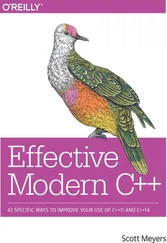Bernard C. Beins - Effective Writing in Psychology
Здесь есть возможность читать онлайн «Bernard C. Beins - Effective Writing in Psychology» — ознакомительный отрывок электронной книги совершенно бесплатно, а после прочтения отрывка купить полную версию. В некоторых случаях можно слушать аудио, скачать через торрент в формате fb2 и присутствует краткое содержание. Жанр: unrecognised, на английском языке. Описание произведения, (предисловие) а так же отзывы посетителей доступны на портале библиотеки ЛибКат.
- Название:Effective Writing in Psychology
- Автор:
- Жанр:
- Год:неизвестен
- ISBN:нет данных
- Рейтинг книги:3 / 5. Голосов: 1
-
Избранное:Добавить в избранное
- Отзывы:
-
Ваша оценка:
- 60
- 1
- 2
- 3
- 4
- 5
Effective Writing in Psychology: краткое содержание, описание и аннотация
Предлагаем к чтению аннотацию, описание, краткое содержание или предисловие (зависит от того, что написал сам автор книги «Effective Writing in Psychology»). Если вы не нашли необходимую информацию о книге — напишите в комментариях, мы постараемся отыскать её.
Effective Writing in Psychology: Papers, Posters, and Presentations
Effective Writing in Psychology's
Effective Writing in Psychology: Papers, Posters, and Presentations
Effective Writing in Psychology — читать онлайн ознакомительный отрывок
Ниже представлен текст книги, разбитый по страницам. Система сохранения места последней прочитанной страницы, позволяет с удобством читать онлайн бесплатно книгу «Effective Writing in Psychology», без необходимости каждый раз заново искать на чём Вы остановились. Поставьте закладку, и сможете в любой момент перейти на страницу, на которой закончили чтение.
Интервал:
Закладка:
You can also appeal to what “everybody” knows is true; some things are so obvious, they must be true. Unfortunately (again), there are some things that everybody knows to be true that simply aren't true.
You can also appeal to others' emotions. Politicians and advertisers do this all the time. Unfortunately (again), conclusions based on emotional appeals can make a person feel good about a decision that, ultimately, proves to be troublesome. Furthermore, such conclusions are often not very stable (Petty & Cacioppo, 1986).
We should not simply believe the experts (even though they are probably right more than they are wrong in their areas of expertise). They should have to convince us with logical arguments. We should not simply trust our senses (even though a lot of what we feel to be true has some validity). We should not simply believe in what makes us feel good or reject what makes us feel bad; it should have logical validity.
When trying to convince your reader of your arguments, you should engage the reader in critical evaluation of your ideas. Research has revealed that persuasion based on logic and on attention to important details leads to greater and longer‐term acceptance of an argument. This is the type of persuasion that you should strive for in your writing.
Different Types of Communication
If you want to communicate with your audience, you need to know what your audience expects. Depending on whether you are writing, speaking, or presenting visually, your approach will differ somewhat, even if the underlying message is the same.
Written Communication
If you are writing a formal, APA‐style research report, as you would for publication in a journal, your reader will expect a structured presentation with considerable detail. The advantage of such a written presentation is that your reader can go back and review the background you cite, review your methodology to make sure it is sound, evaluate your results to judge if they are appropriate, and see if your conclusions are justified from your results and if they relate to the ideas you presented in your introduction. A written document is a permanent document that the reader can go back to at will.
Professionals (including professors) expect the writing to be free from colloquial or informal expressions and to be entirely grammatical. You should choose your words carefully because they are lasting expressions of your ideas.
Oral Communication
In contrast, if you are delivering that same research in an oral presentation, you cannot possibly pack the same level of detail and expect your audience to understand your ideas. Working memory is limited to between three and seven chunks of information. So if you are talking to people in an audience, it does not make sense to introduce as many ideas as you would in writing; your audience cannot go back to review what you have already said. They are forced to listen to your ideas in the present and can keep track of perhaps five ideas.
In an oral presentation, you should limit yourself to three or four main points you want your listeners to remember. You can introduce minor points to help reinforce the major ideas, but your audience will have a hard time keeping the details in memory. Professional speakers suggest that you tell your audience what you are going to say, then say it, and finally tell them what you just told them. There is something to this philosophy, although in a research presentation, you should not be quite so simplistic. You should establish the framework of your presentation and repeat critical points when appropriate. Still, in the short period of time allotted to oral presentations, usually 10–15 minutes, you are limited in the amount of information you can convey, just as the audience is limited in its ability to comprehend your ideas.
Poster Presentations
Yet another medium of expression is visual. Increasingly, research conferences are relying on poster presentations for reporting research findings. In this form of communication, you present all your information in a small display that might be about 4 ft × 6 ft (i.e., 1.3 m × 2 m) in size. The dimensions vary from one conference to another, but the amount of space always seems to be smaller than you would want.
One of the worst things you can do is to fill the poster with text. Nobody wants to fight through a poster with endless strings of sentences. The viewer is typically interested in your main points. The use of tables, figures, bulleted points, and other eye‐catching features is a good idea in a poster. During such a presentation, the author of the poster is typically present, so if viewers want to know more details than are available on the poster, they can simply ask.
So, for a poster, you should present the main points with as little text as you can get away with. Visual elements are often a more meaningful way to make your points accessible. The result is often more information than in an oral presentation, but less than in a complete APA‐style research report. It helps that the researcher is present to clear up any misconceptions that arise because not all the information is available on the poster. Furthermore, if you are presenting a poster, you can create a handout that resembles an APA‐style manuscript. In this way, interested people can get the gist of your research and can ask you any questions that come to mind right away. Then they can take your written handout and attend later to the level of detail they desire.
Internet Publishing
A relatively new option for communicating your ideas is through the internet. Web presentations combine various features of traditional manuscripts and of visual displays, but there are some additional elements that foster effective communication. A web‐based presentation allows easy use of visual elements that are often too costly to include in printed manuscripts. In addition, you can use hyperlinks with your text to refer the reader to related web material or to references.
A simple web page is fairly easy to create if all you need is to present text, figures, or pictures, and hyperlinked text. It is helpful to know the code for the language of the web, HTML (HyperText Markup Language), but with the authoring software on the market, knowing HTML is not absolutely necessary. Fortunately, it is fairly easy to learn. You can even save word‐processed documents in HTML format, although generating a well‐formatted web page from a word processor can be tricky.
Effective Communication
A professor named Denis Dutton held a bad writing contest for a few years. The sentence that motivated him to begin the contest appears below; it was about an attempt at educational reform. The prose, which was not intended to be bad, was absolutely incomprehensible. (You should not feel bad if you don't understand it.)
[It] would delegitimate the decisive, if spontaneous, disclosure of the complicity of liberal American institutions of higher learning with the state's brutal conduct of the war in Vietnam and the consequent call for opening the university to meet the demands by hitherto marginalized constituencies of American society for enfranchisement.
(Dutton, 1999)
This book is an attempt to prevent you from writing such incomprehensible prose.
No matter what you choose as your medium of presentation, there are some characteristics of good communication to remember. First, you should establish your theme and organize your thoughts around it. Developing an outline or an idea map (as illustrated in Chapter 2) can be very helpful. To create either requires that you know what you want to say. It is tempting sometimes to start writing without a coherent idea of your message. If you operate this way, your writing may meander toward irrelevant topics.
Читать дальшеИнтервал:
Закладка:
Похожие книги на «Effective Writing in Psychology»
Представляем Вашему вниманию похожие книги на «Effective Writing in Psychology» списком для выбора. Мы отобрали схожую по названию и смыслу литературу в надежде предоставить читателям больше вариантов отыскать новые, интересные, ещё непрочитанные произведения.
Обсуждение, отзывы о книге «Effective Writing in Psychology» и просто собственные мнения читателей. Оставьте ваши комментарии, напишите, что Вы думаете о произведении, его смысле или главных героях. Укажите что конкретно понравилось, а что нет, и почему Вы так считаете.












